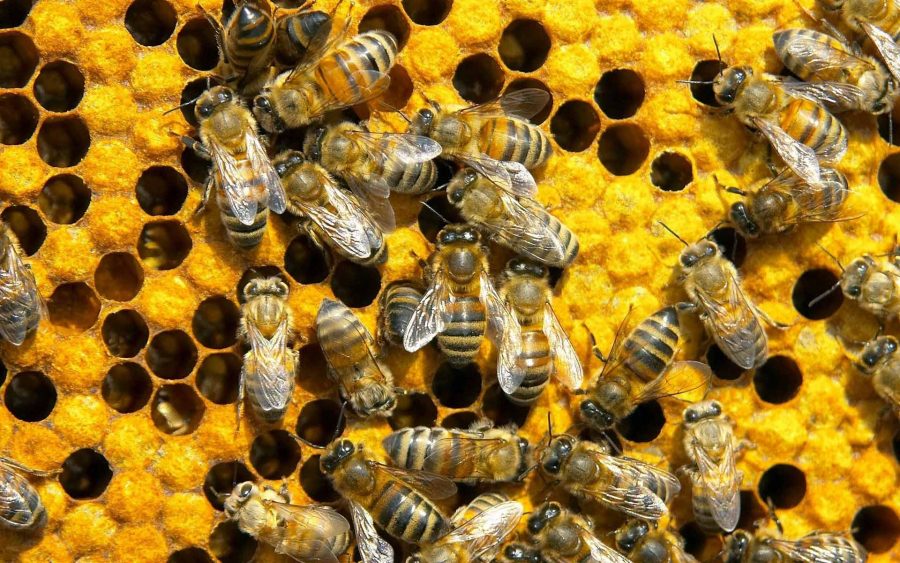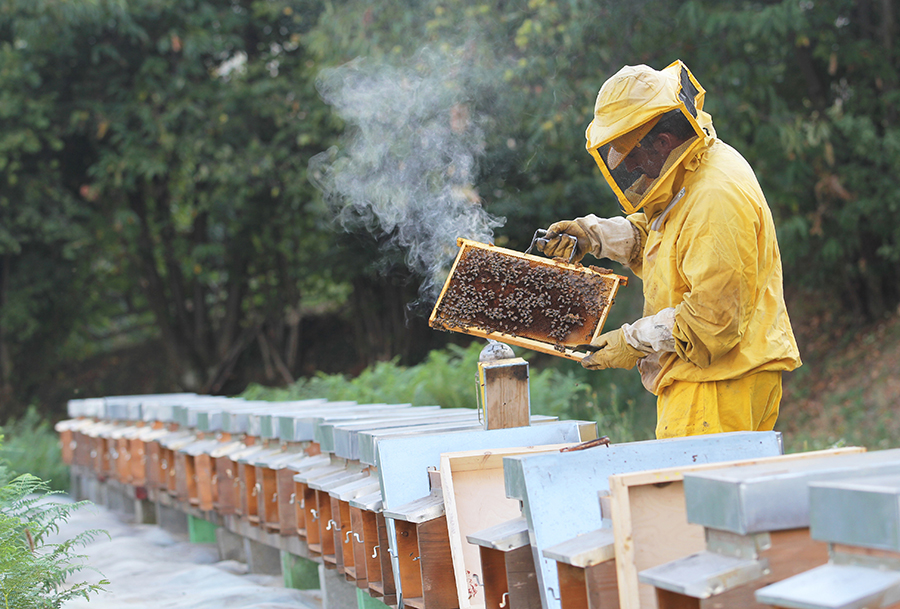It seems as if there is a new glimmer of hope for the American honeybee population, as a new nationwide survey shows that beekeepers across the United States lost 33 percent of their honeybee colonies during the year between April 2016 and April 2017.
The preliminary results of the annual survey said that rates of both winter and summer losses and the rates of annual losses overall improved compared to last year. The findings show that the total annual losses were the lowest recorded since 2011-12 when the annual survey recorded less than 29 percent of colonies throughout the year in the U.S. Winter losses were the lowest recorded since 2006-07 when the survey began.

The survey results show lowest winter honeybee losses in over a decade
The annual survey, which asks commercial and small-scale beekeepers to track and record the survival rates of their honeybee colonies, is conducted by the nonprofit organization Bee Informed Partnership in collaboration with the Apiary Inspectors of America. The new results, as well as results from previous years, are available on the Bee Informed website.
“While it’s encouraging that losses are lower than in the past, I would stop short of calling this ‘good’ news,” said Dennis vanEngelsdorp, an assistant professor of entomology at the University of Maryland as well as the project director of the Bee Informed Partnership, according to Eurasia Review. “Colony loss of more than 30 percent over the entire year is high. It’s hard to imagine any other agricultural sector being able to stay in business with such consistently high losses.”
The Bee Informed Partnership informed that beekeepers who responded to their survey lost a total of 33.2 percent of their colonies over the course of the year. The results mark a decrease of 7.3 percent over the previous year, which took place between 2015 and 2016, and when loss rates were found to be 40.5 percent. The survey also found that winter loss rates decreased from 26.9 percent in the previous winter to 21.1 percent this last winter. Summer loss rates also decreased, from a 23.6 percent the previous year to 18.1 percent this last year.
Experts believe the rates of colony loss are still too high
The U.S. government has set a goal of keeping winter losses under less than 15 percent, although beekeepers haven’t been able to maintain those levels for decades. The researchers said that many factors are contributing to colony losses, with diseases and parasites being the major loss cause. Other factors include poor nutrition and pesticide exposure, which is quite common especially among commercial beekeepers. The researchers explained that these “stressors” are likely to merge with each other and fuel the problem.

“This is a complex problem,” said Kelly Kulhanek, a graduate student in the University of Maryland’s Department of Entomology, who helped with the survey, according to Eurasia Review. “Lower losses are a great start but it’s important to remember that 33 percent is still much higher than beekeepers deem acceptable. There is still much work to do.”
Bees pollinate over $15 billion worth of crops in the United States
In the fall months last year, mite levels throughout the country were noticeably lower in most honey bee colonies compared with past years, noted the researchers. They believe it was due to increased vigilance on the part of keepers, added to more availability of mite control products, as well as environmental conditions that favored the use of effective and timely mite control measures. For instance, several mite control products contain essential oils that break down at high temperatures, but as many parts of the country experienced relatively mild temperatures in the spring and summer last year, the weather conditions helped the products work.
The Bee Informed Partnership conducted its 11th survey in a row and noted it’s the seventh year they include summer and annual losses in the results. According to the organization, over 4,900 beekeepers from all 50 states and the District of Columbia answered to this year’s survey. Those beekeepers manage around 13 percent of the country’s estimated 2.78 million honey bee colonies.

“Bees are good indicators of the health and landscape as a whole,” said Nathalie Steinhauer, a graduate student in the UMD Department of Entomology, who collected data for the survey. “Honeybees are strongly affected by the quality of the environment, including flower diversity, contaminants, and pests.”
Steinhauer added that to keep healthy bees, you need a good environment and you also need your neighbors to keep healthy bees; as for her, honey bee health is a community matter.
The survey is part of larger studies focused on understanding how honey bee colonies are in such poor health, and what can be done to revert the situation. Some crops, like almonds, depend entirely on honeybees for pollination.
Source: Eurasia Review
